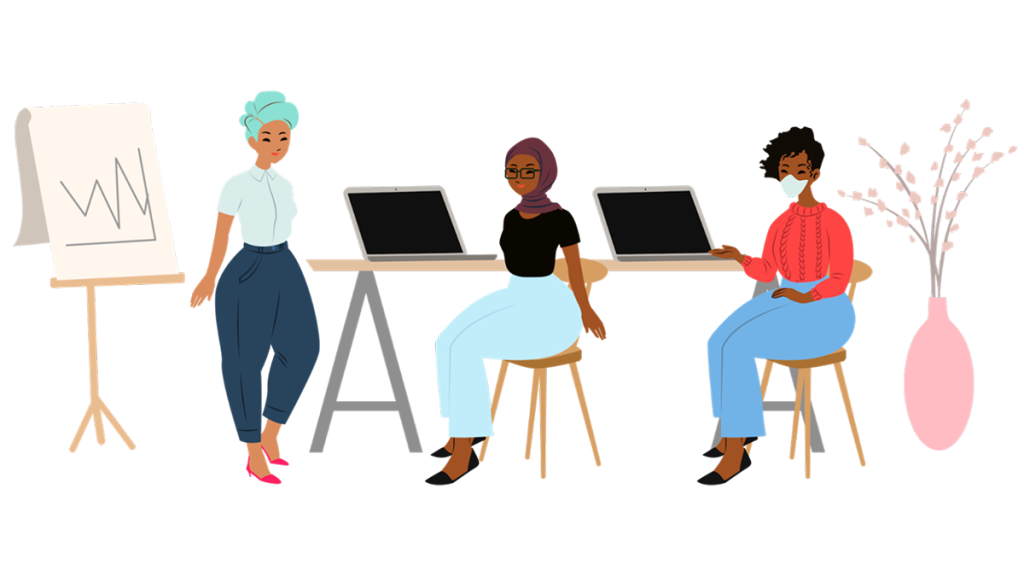
Image: Leni Kauffman
Better teamwork through science
Dive into the science of team dynamics and discover practical tips for building stronger, more effective teams
Throughout this fellowship, I’m exploring common operational challenges that our news organizations face, and inviting input and insights from experts inside and outside of our field.
Team dynamics and collaboration are complicated. We are all humans with wildly different personalities, work styles, and coffee habits. Yet we know that when teams work well, that’s when the magic happens. A well-functioning team can achieve the seemingly impossible (which is pretty needed in our industry, yes?). They can transform half-baked ideas into game-changing innovations and build resilient organizations that support their people and achieve their missions.

I spoke with Sam Adamson, a coach and facilitator who focuses on team collaboration and dynamics. He brings his studies in Cognitive and Behavioral Anthropology to the workplace. He is also a refugee from several years in PR, so certainly something many of us can relate to. Here are some selections from our conversation.
Myers: Tell me a little bit about you and your work.
Adamson: I’m a teambuilding and cooperation consultant, a teamwork facilitator — I help teams communicate and understand each other better through empathy and their shared human-ness. I work with teams to build their connections, become more cooperative, and to innovate and solve problems. My background is in Human Evolutionary Anthropology, focusing on the evolution of human social bonding, cooperation, and collaboration. I worked in a range of industries from education to NGOs and public relations, I use my various experiences to inform how I help teams and leaders to connect more deeply with others
Myers: How can your studies in anthropology and human evolution inform how we set up people processes in our organizations?
Adamson: Human social relationships are complicated, and whilst we’re good at creating social bonds, we have neurological limitations on how many relationships we can maintain.
Anthropology shows us that there are boundaries for relationships at groups of 5, 15, 50, 150 and 1500 or so people. At these points, groups become less cohesive and naturally start to break up.
This is a problem for organizations, especially as they are growing, to maintain clear goals and a shared identity. It’s common for people in an organization to identify more strongly with their team rather than the whole organization, and this can lead to siloing and territoriality between teams that should be working together.
Anthropology also shows us how we can maintain relationships across these divides. It can’t get rid of them, but rituals, symbols, shared goals, and shared experiences are powerful ways to connect people. When we add evolutionary understanding of human social bonds to trigger social bonding hormones such as oxytocin and serotonin, with simple activities like walking, collaboration becomes even more effective.
Myers: What insights have you gained about how teams can best collaborate and work together?
Adamson: Not everyone likes each other [Myers: no kidding.]. Not all personalities are compatible. But humans can still successfully work together in spite of these realities. I think teams best work together when they:
- Empathize with each other intentionally. It’s easy to forget that each person is a human with their own challenges and backgrounds. Finding ways to see other people as being like you is super important to building deep connections. This is especially important for team leaders.
- Communicate in a structured way. Not everyone communicates in the same way. But simply asking for an update does not necessarily mean you will get the true information you want. Put in place a structured process that team members can use to give formal updates. At the same time, allow informal communication with things like walking meetings or casual conversations to help build rapport.
- Make short, medium, and long term goals for the team and organization clear and consistent. People want to feel like they’re being part of something bigger than themselves and that they’re working towards something important. But they also need to be reminded of this in a consistent way in order to keep them engaged.
Myers: What is Positive Intelligence and how do we use it as we run our organizations?
Adamson: Positive Intelligence, also known as PQ, was developed by Shirzad Chamine and his colleagues and is rooted in extensive neurobehavioural research. There are several principles involved, including learning to identify and label negative and sabotaging thoughts, and becoming more empathetic, but PQ hinges on creating a mind focused on positives because this means you are not only mentally healthier, but better able to serve yourself and others, lead better, and solve problems faster and in a more focused way.
Myers: How do humans build community through shared rituals? How do we bring that to the workplace to build connections?
Adamson: Simply put, a ritual is a process where you pass from one state to another. This could be the ritual of cleaning your teeth; they were dirty and then they were not. Driving to work. A religious ritual. It’s typically done once a year to many times a day. But it’s something that happens ‘regularly’.
When we share in this experience we not only share in the activity, but we create a shared identity. In the workplace, you can become creative with these rituals. You might already have some. Things as simple as a morning meeting. But you can also take these to the next level by making a meeting a walking meeting (as this exercise also releases serotonin and oxytocin). You could have a stretch break at the beginning of each day, which is a popular practice in some countries.
In a remote setting, this could be an online morning meeting. It could be sharing a daily inspirational quote or even a meme, or having a weekly productivity session where people simply log on and work together in silence (try it, it’s simple but effective). But it’s something regular, ritualized, that helps people shift to a shared experience. You can directly engage your teams to find out what they’d like to do for these and experiment with different ideas.
Editor’s Note: This conversation has been edited for clarity and brevity.
Cite this article
Myers, Kate (2024, Sept. 16). Better teamwork through science. Reynolds Journalism Institute. Retrieved from: https://rjionline.org/news/better-teamwork-through-science/
